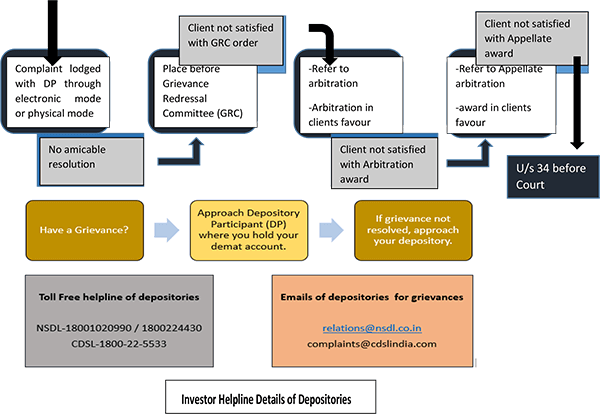Options trading is a lucrative investment option as it offers investors the opportunity to hedge risk and generate income by capitalizing on market fluctuations. Option Trade is a type of derivative contract that offers the buyers the right to buy or sell a stock at a pre-determined price at some point in the future.
The buyers have a right but are not obligated to exercise the right. Options traders pay an extra amount known as a Premium to the seller to avail such a right.
If the market price is unfavorable then the option holders let the option expire and do not exercise their right. This helps ensure that the potential losses suffered are lesser than the premium paid. At the same time, if the market moves in the direction that makes this right more valuable, the option holders exercise their right.
To understand more about options trade, let us first get familiar with a few terms:
- Strike Price refers to the predetermined price at which the option holder can either buy or sell the underlying asset. In the case of a NIFTY 14 DEC 21000 CALL Option, the strike price is set at 21000.
- Spot Price represents the current trading price of the underlying asset in the market.
- Expiration Date which is also known as expiry date, is the deadline by which the option needs to be exercised. If the option is not exercised by the expiration date, the option becomes void. The expiration date for the NIFTY 14 DEC 21000 CALL Option is set for 14 December.
- Lot Size means the minimum number of scripts that can be bought or sold in an options trading contract. The lot size changes depending on any revisions made by the stock exchange and is determined by the asset class or type.
- A Call option offers the buyer the right but not an obligation to buy the underlying asset at the strike price within a specified period, until the expiry date. For example, if you acquire a NIFTY 14 DEC 21000 CALL Option and the stock price rises to INR 21500, you have the option to exercise it and buy the stock at the lower strike price of INR 21000, thereby generating a profit.
- A Put option offers the buyer the right to sell the underlying asset at the strike price within a specified period. It is a right and not an obligation. If you possess a NIFTY 14 DEC 21000 PUT option and the stock price drops to INR 20500, you have the option to exercise it and sell the stock at the higher strike price of 21000, thereby making a profit.
Now that we have understood the basic terms related to Options trading, let’s look at one of the most important things to consider before placing an options trade – Understanding and Analyzing market indicators. Entering the world of options trading in India without knowing the key indicators can be risky. In this blog post, let us explore the 7 key indicators that every options trader should understand before executing their first option trade.
7 Key Indicators Every Options Trader Must Know Before Their First Trade
1. Implied Volatility:
Implied Volatility (IV) helps in measuring the market’s expectations regarding the price volatility of an underlying asset in the future. High implied volatility implies that there are higher chances of significant price volatility in the future, thereby impacting the option premiums.
The higher the IV, the higher will be the option premium and vice versa. IV helps traders evaluate the value of an option, whether it is overpriced or underpriced compared to its historical volatility. IV is one of the best indicators for option trading.
2. Open Interest:
Open Interest (OI) indicator represents the number of options that have not yet been exercised, closed or expired. OI is one of the most important indicators for options trade as it helps traders understand the sentiment of the market.
If OI increases along with the option price, the traders are bullish on the stock or index. On the other hand, if OI increases but the price of the option price decreases, it suggests that the traders are bearish.
3. Volume Option:
Volume refers to the number of contracts traded over a certain time. It is a great indicator for option traders because it helps determine the liquidity of the asset. The volume option shows the trader’s interest in a particular option.
If there is a lot of interest in a particular stock, it will be easier to trade in it. However, if traders have less interest in any script, it may be difficult to sell it. Volume is one of the most important indicators when it comes to options trading.
4. Moving Average:
Moving averages are one of the key indicators that help traders in analyzing the market. They are calculated by taking the average price of an asset over a certain time and then dividing it into moving averages.
This allows traders to identify levels of support and resistance. It helps in identifying the market trends. A moving average crossover is a popular trading strategy where traders look for the intersection of two moving average values as a signal to enter or exit a trade.
5. Relative Strength Index (RSI):
Relative Strength Index (RSI) helps in measuring the speed and change in movements of the asset price. It is an important indicator as it helps traders to identify overbought and oversold conditions in the market. If the RSI is above 70, the asset is considered overbought and when it is below 30, it means it is oversold. This information helps traders to enter or exit the trade at the right time.
6. Money Flow Index (MFI):
The Money Flow Index is an indicator that is based on the price and volume data. Popularly known as the volume-weighted RSI, the MFI indicator helps measure the inflow and outflow of money into an asset over a specific period (generally 14 days). It indicates the trading pressure.
A reading of 80 on the MFI index means the security is overbought, whereas a reading below 20 shows that the security is oversold. The MFI moving in the opposite direction of the stock price indicates a trend change. It is considered one of the best indicators for option trading.
7. Put-Call Ratio (PCR) Indicator:
The put-call ratio measures the trading volume of put options compared to call options. A change in the value of the put-call ratio rather than its absolute value indicates a change in overall market sentiment. It is one of the best indicators of options trading.
If there are more calls than puts, the ratio is greater than 1, indicating bullishness. If the put volume is greater than the call volume, the ratio is less than 1, indicating a downtrend.
Conclusion:
Options trading in India can be highly lucrative for those who take the time to understand and implement key indicators in their trading strategies.
By analyzing in-depth asset underlying trends, implied volatility, risk-reward ratios etc. you can make an informed decision. Continuous learning, discipline and risk management are key to success in the dynamic world of options trading.
Gainn Fintech offers a reliable platform and digital solutions to trade in Futures & options. Gainn Fintech provides world-class effective tools for due diligence and risk management. With the right guidance and support, futures and options can be a valuable addition to your investment portfolio.




